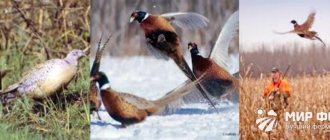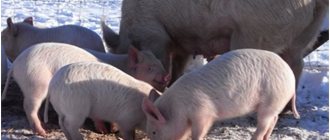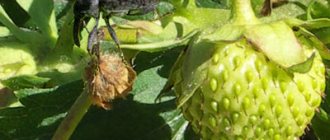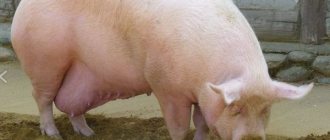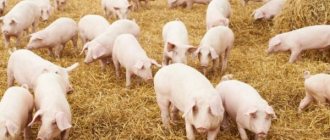The most successful area of modern livestock farming is considered to be pig breeding. Pork is a meat that is very popular in the market. So, according to statistics, about 2 million tons of it are consumed annually in Russia. This indicates that there is significant demand.
In addition, caring for pigs is somewhat easier than caring for cows. This factor is especially important for beginning farmers, as well as for those who have to rely solely on their own strength. The article will introduce you to the features of pig breeding at home, tell you about the right choice of breed, organization of feeding and care.
Specifics of domestic pig farming
Pigs are distinguished by good fertility and, with proper regular care, produce up to 12 piglets per farrowing. In addition, these animals grow quite quickly and have a decent slaughter weight. Pigs are omnivores, so choosing food for them will not be difficult.
Advantages
Pros of raising pigs:
- You can choose the most suitable direction: growing for meat, lard, bacon or selling piglets. The breeding boar is used for mating on a paid basis.
- Rapid increase in marketable mass. 6-month-old piglets can already be slaughtered for meat.
- Slaughter weight – up to 80% (for cattle – no more than 60%).
- Animals are undemanding to living conditions and can eat waste, weeds, and grass.
- Sows carry their offspring for about 114 days; two farrows are possible per year.
- Many breeds are immune to most diseases. With timely vaccination, you can forget about health problems.
It is these factors that have determined the popularity of pig farming as a family business.
Flaws
Possible difficulties of domestic pig farming:
- Caring for livestock is quite physically difficult: it requires a lot of effort to clean pigsties, feed the animals, and take care of their health.
- At certain times, such as during farrowing, pigs will require even more careful care.
- To start your own business you will need some capital. The minimum costs are for the purchase of piglets and the arrangement of a pigsty.
- It is important to carry out vaccinations in a timely manner and comply with sanitary standards.
However, there are still more positive aspects.
Selecting a breed for home breeding
An important initial step is to select the most suitable pig breed. To make this choice competent and informed, you need to familiarize yourself with the characteristics of different breeds of pigs.
All pig breeds are conventionally divided into 3 groups:
- Meat plants, in which the ratio of meat products and lard at the output is determined by the feeding ration.
- Meat or bacon, which are supposed to have a small amount of lard.
- Greasy, having a large layer of commercial lard in any diet.
Universal breeds:
- The large white pig is unpretentious, but needs warmth. Prolific, bears about 12 babies per farrowing. Individuals quickly gain weight. They are distinguished by their large size, elongated body and small head. The average weight of an adult female is 250 kg, males gain up to 370 kg of live weight.
- The Breitov pig is unpretentious, has excellent immunity, and is undemanding when it comes to feed. Females give birth to about 12 piglets, an adult weighs about 240 kg. Producer boars gain weight up to 330 kg. Distinctive external features are large drooping ears and voluminous drooping cheeks. They have a white or pigmented color.
- The Siberian northern pig has long, dense hair, as it was bred for cold climates. The average weight of a female is 250 kg, and she gives birth to an average of 12 babies per survey. An adult male weighs about 360 kg.
Bacon breeds:
- Landrace. The attractiveness lies in the fact that individuals quickly gain weight with modest portions of food. The result is lean meat with excellent taste characteristics. Females are fertile and produce up to 12 piglets per survey. The weight of an adult female is on average 250 kg, males gain 320 kg.
- Duroc. A distinctive feature of representatives of this breed is the small number of piglets (6-9 heads). The weight of an adult female is about 240 kg, boars develop up to 360 kg. The advantage of the variety is its active weight gain; piglets gain 800 grams per day.
- The Urzhum pig was bred artificially and is characterized by rapid development and fertility. In six months, the pig gains at least a hundredweight of live weight, gaining 850 grams per day.
Greasy breeds:
- The Mirgorod pig is an artificially bred pig; the piglets gain 700 grams per day. The animals are suitable for grazing and actively grow on vegetables and potatoes.
- A large black pig can give birth to up to 12 babies at a time. Females gain 250 kg, the live weight of males reaches 360 kg.
- The Berkshire breed is distinguished by black stubble and white spots on the limbs. Individuals are undemanding when it comes to food, easily adapt to the climatic conditions of the area, and gain weight on succulent food. The final product yield is about 88%.
Breed selection
Raising pigs at home for beginners is not an easy task. It is very important not to make mistakes at the first stage - choosing a breed, of which there are more than 30. Get to know the main directions and options.
Meat-fat
Also called universal because they allow you to get both meat and lard.
Meat and fat breeds include:
- large white;
- Siberian northern;
- Breitovskaya;
- Muromskaya;
- Kemerovo
- Latvian white.
The average weight of boars of these breeds is 350 kg, pigs – 230-240 kg. They gain weight quickly, the number of piglets in one farrowing is 10-12.
Greasy
Such pigs have a lot of high-quality lard.
The direction is represented by the following breeds:
- Ukrainian steppe;
- large black;
- Mirgorodskaya;
- Mangalitskaya.
The average weight of boars is 330-350 kg, pigs - 220-250 kg. The carcass contains 50% meat, about 40% lard. They tolerate heat easily and can be kept on pastures.
Bacon (meat)
These include:
- landrace;
- Urzhum;
- Estonian bacon;
- Duroc.
On average, a pig weighs about 250 kg, a wild boar - up to 320 kg. The breeds have very high meat qualities, a thin layer of subcutaneous fat. Slaughter yield – 55-70%.
Each farmer himself chooses the direction of pig farming that interests him, taking into account his capabilities and the specifics of demand in the region.
Buying piglets
Raising pigs for meat at home begins with the right choice of piglet.
What to pay attention to when purchasing:
- Age – about 2 months.
- Weight - at least 15-16 kg.
- Activity, appetite. Eating feed greedily is a sign that the piglet is ready to buy. If the piglet lazily sucks food, it is better to abandon it.
- Smooth breathing without wheezing.
- Uniform pink tint of the membranes of the eyes, snout and mouth. The ears are also pink.
- Wide chest and straight back.
- Rounded sides and sacrum.
- The eyes are shiny and mobile. No injuries, discharge, swelling.
- Crochet tail. The sign is especially important for the universal and meat direction, this indicates that the muscles of the whole body are well developed.
- Shiny hooves on strong legs.
- The bristles are shiny.
Experienced pig breeders pay attention: if a piglet has short legs, it stops growing early and begins to gain fat, so it is better to use it for lard. Piglets with long legs grow for a long time, but gain weight quickly, so inexpensive concentrates can be used to fatten them.
Caring for pigs at home
Raising pigs at home is significantly different from industrial breeding on large farms. To achieve great results:
- Place a thermometer in the pigsty that will help control the temperature: for young animals 18-23 degrees, for the rest - 12-15;
- take care of the humidity at 70-75%, regularly clean, clean and ventilate the room;
- protect animals from drafts and cold, take care of insulation, sealing of the floor and window openings;
- periodically clean the floor of the pigsty, the open area where animals roam, this will protect against diseases;
- walk the pigs, the more the better;
- change the water in the drinking bowls regularly, do not let it stagnate and sour;
- clean feeders after each meal;
- carry out disinfection once a month;
- choose the right diet, feed 2 times a day, use, in addition to cereals and hay, fresh grass, vegetables, and vitamin supplements.
Pig farming can be a hobby or a way to provide your family with nutritious, healthy food. Then a small number of livestock and mechanization of animal care processes are reasonable.
Containment systems
There are three main options.
Free-range
In warm regions, animals have the opportunity to go out to the walking area, since the doors of the pigsty have movable valves. The site itself is divided into sections, so animals from pens end up in their own sections.
Bench-walking
When breeding in regions with a temperate climate, this method is used. The pigs are in a pigsty, the doors of which are tightly closed. The owner controls the walking, releasing the livestock only on sunny days or adhering to a certain daily routine. The system is also called “regime-walking”.
Bezvygulnoe
Found in large farms. The livestock is kept indoors, it is not provided for walking, and therefore the site itself is not equipped.
Pen-and-walk housing is most often used, since access to fresh air strengthens the animals’ immunity and helps them gain weight faster.
Methods of raising pigs
There are 3 main growing methods.
The farmer decides which one to choose:
- Free range. This method is based on constant access to walking and free movement in the surrounding area. Minus - it is impossible to adjust climatic conditions.
- Walking according to the schedule. Animals are taken outside at certain times for 2-3 hours a day. This is quite enough to get a dose of sunlight, stretch your limbs and clean your machines.
- Without a walk. Pigs are constantly indoors, which significantly accelerates weight gain. But with this method it is necessary to introduce a sufficient amount of vitamin supplements into the diet and use special premixes in accordance with age. This will improve the health of the livestock. But the lack of fresh air has a negative impact on the future generation, so breeding animals need to be changed regularly.
Preparing the pigsty
It is important to keep pigs separate from other pets. The room for them should be dry, bright, warm, without drafts, but with good ventilation. The best materials are brick and wood. The floor should be moisture-proof and dense, preferably made of boards, although cement, brick and cement-concrete options are acceptable. In the latter cases, wooden shields are needed on which the pigs will rest.
Premises requirements
Basic requirements for a pigsty:
- Floor strength. Animals should not be able to dig under the ground.
- Combination of lighting: natural + artificial.
- The walls are strong, reliable, and do not allow freezing.
- There should be gutters on the floor to remove waste.
- Availability of good ventilation.
- Temperature – not lower than +11 °C.
Remember: despite the fact that the pig has an undeserved reputation as an unclean animal, it loves cleanliness in its home. Unsanitary conditions are the main cause of disease and mortality in livestock.
Dimensions
Let's consider how much free space is needed for different sex and age groups of animals.
Based on this, the size of the pigsty is determined:
- The boars are adults. For 1 head – 7 sq. m. Sometimes they are kept in small groups (up to 5 heads) in special pens, then for 1 head - 2.5 sq. m.
- Sow with offspring. Requires 8-9 sq. m.
- Gilts during growing and fattening. Requires 3-4 sq. m.
- Single queens. Need 1.4 sq. m of space.
Arrangement of the premises
The premises for keeping pigs must have:
- pig pens;
- a special pen for a sow with offspring (if breeding is planned);
- feeders (wooden, metal, asbestos);
- drinking bowls;
- drainage pits;
- cleaning equipment.
The pen for a sow with offspring is divided into two identical parts using a partition in which holes for piglets are prepared (35-40 × 30-40 cm).
Litter
Pigs need a warm floor, which is why bedding made of straw, sawdust and hay is used. It is very important to use such an amount of material that it is convenient for the animals to loosen it. The pigsty must be clean, so the bedding will have to be replaced as it gets dirty.
Walking area
If you decide to start raising pigs at home, you should equip a walking area, since in the fresh air animals gain weight faster and get sick less often. The courtyard in front of the pigsty is concreted or paved with bricks, surrounded by a fence or metal mesh. Patio area – 7-10 sq. m. In summer, animals will spend quite a lot of time here, and in winter, they will go out for a walk at a time when the room is ventilated.
Pig Breeding for Beginners
When starting to grow, you must first decide on the purpose of your business. Animals are raised both for subsequent sale as live weight and fattened for meat. Many beginning farmers choose the first type of activity, since it is quite profitable and least expensive, both in terms of time and finances for purchasing feed.
Fattening for meat, although it requires large financial investments and a scrupulous study of the theoretical basis, gives the opportunity not only to provide oneself with a tasty, high-quality product, but also to earn money from it.
Regardless of the chosen direction, every entrepreneur (even a summer resident) must register his activities with the relevant government authority.
Care
Caring for animals should be daily. The pig farmer should maintain the cleanliness of the pigsties and ensure that the indoor conditions are normal - warm and dry. It is necessary to organize ventilation, but avoid drafts.
Keeping piglets
Permissible temperature is not lower than +16-18 °C, humidity is 70-85%. Dampness and dirt in the pigsty are unacceptable.
Caring for piglets involves:
- timely replacement of litter;
- cleaning of waste products;
- disinfection of premises, prevention of insects;
- washing feeders and drinkers;
- organization of walking in the fresh air (starting from 5 days of age, piglets in crates are taken outside even in winter, they are brought indoors as soon as the babies begin to tremble);
- Bathing will strengthen the immune system and improve metabolism.
In winter, the optimal temperature in the room is maintained using heating devices. At 2-3 weeks, a boar intended for fattening should be castrated. If the piglet was bought at an older age, you need to give it time to get used to the new environment and only then carry out the operation. But there is no need to delay.
Adult care
The basic rules of care are:
- maintaining cleanliness, replacing bedding;
- filling drinking bowls with clean water;
- washing feeders;
- monthly disinfection of the premises.
Waste collection technologies
Manure removal is considered a fairly labor-intensive process in pig farming.
Two technologies have been developed for this purpose:
- Danish. It involves the use of slatted floors through which waste falls through inclined chutes into manure pits located under the pigsty. The technology reduces labor costs and also eliminates the need for litter.
- Canadian. Involves the use of a thick layer of bedding made of straw, sawdust or sand. Some pig farms use fermentation bedding, which is populated with special microorganisms that create heat and decompose waste products of the livestock. To maintain cleanliness, the top layer of straw is periodically changed, but the bottom layer, which is infested with bacteria, is not touched. Once every 2-3 years the litter changes completely.
Keeping pigs in winter: features of keeping pigs indoors
In our climatic conditions, a suitable room for raising pigs is usually a hangar or barn, and not necessarily a heated one. Under suitable weather conditions, an outdoor enclosure can also serve as a room. You will learn further what rules must be followed depending on the choice of one method or another.
The technology of raising pigs on a private farm involves the construction of a separate room (pigsty) for animals.
Some pig farmers practice the cold method of keeping pigs in winter. The essence of the method is to place animals in a closed, unheated pigsty. The exception is piglets, which in the first days after birth must be in a room heated with a heater.
In order for pigs to be able to move freely, the room for keeping one or more pigs must be spacious. It is important that the temperature in the pig room in winter does not fall below 2°C, and the humidity does not exceed 80%. Drafts are also not allowed.
The pigsty itself needs insulation, for this you can:
- seal cracks in the walls;
- insulate windows and ceiling;
- cover the walls with boards and insulate them with sawdust or straw;
- build a flooring from boards or lay bedding on the floor.
To make floor bedding, it is best to use natural materials with low thermal conductivity, which are laid in a thick layer: straw, sawdust, shavings, etc. The old bedding is replaced with a new one no earlier than after 3-4 months of fattening - this is one of the conditions for successfully keeping pigs in an unheated room.
Feeding
Pigs are considered omnivores, but don’t think that you can feed them exclusively with waste and grass. Nutrition should be balanced and healthy, contain the required amount of proteins, fats and carbohydrates.
What do they eat
Let's look at the main types of pig feed.
Concentrated
These are cereals and legumes, bran, waste from grain processing.
Pigs can be given:
- Barley. It has a beneficial effect on the taste of meat and is well eaten by animals.
- Millet. Used in small quantities for fattening.
- Oats. Given only to piglets.
- Peas. It is a source of protein; it must be steamed first.
- Corn . Given in combination with protein-rich foods.
- Bran . They contain a lot of fiber, so they are given in small doses.
- Cake (sunflower, flaxseed). Steamed for at least 4 hours before use, it is a valuable source of vegetable fats.
The grain is given in crushed form, which is good for digestion. There is no need to boil; under the influence of high temperatures the beneficial properties will be destroyed. But the beans are boiled.
Juicy feed
These include:
- Potato. It is fed to pigs in boiled or steamed form; it is better not to feed raw tubers, since the starch will be difficult to digest.
- Beet. It is given both boiled and raw, crushed.
- Carrot. Rich in vitamin A, given raw, previously cleared of soil. Adults are given whole vegetables, while piglets are given chopped vegetables.
- Pumpkin. Given along with the seeds in crushed form, it is considered a powerful prevention of worms.
Greens
First of all, it is nettle, which grows in large quantities in forests and fields. It is easy to dry it for the winter by tying it into brooms. Daily dosage – 300 g. The source of protein and fat is rapeseed, rich in calcium, magnesium and phosphorus.
Pigs are also given:
- clover;
- peas;
- alfalfa;
- corn;
- Vika.
It is important not to overuse green food, otherwise it will cause digestive problems. The winter analogue of grass is combined silage.
Other feeds
These include:
- Food waste (crackers, raw vegetables and fruits, peelings, fresh leftover food left uneaten by people, waste from cutting animals and fish). 1.5-2 months before slaughter, the feeding of fish waste is stopped; it negatively affects the quality of the meat.
- Edible mushrooms (dried, boiled). They are added in small quantities to the mash.
- Acorns.
- Herbal flour. Harvested in summer from cereals and legumes, it is a valuable source of nutrients.
- Hay flour. Prepared from high-quality bean hay and pea straw. Included in the diet to enrich it with protein.
- Pine flour. Rich in vitamins, can be obtained all year round. Thanks to consumption, animals become more resistant to diseases.
- Milk. Most often it is given to piglets; adult animals are given whey or buttermilk.
- Meat and fish are sources of protein.
Supplements
Old-school pig farmers may be surprised to learn that, according to modern research, pigs need to be given flavor additives. They are aimed at improving appetite and digestion.
First of all, these are oils:
- citrus fruits (tangerine, lemon, orange);
- garlic;
- cinnamon;
- dill;
- caraway;
- sage;
- mint.
You can also add foods that contain these oils to your pigs’ diet. In addition, you can add waste cocoa beans, anise seeds, and vanilla to your pigs' food.
Fattening piglets
Raising piglets involves balanced feeding of animals for rapid development and weight gain. In the first week they feed mainly on milk, but for the further development of the animals they need to be transferred to a special balanced diet.
Suckling piglets are gradually introduced to various feed additives. First, they are given grain crops (roasted barley or corn). Small animals have a very high need for minerals, so bone meal and chalk must be included in the diet. You can also provide animals with high-quality hay and milk milk.
Diet
Raising piglets requires constant changes in diet, since animals grow very quickly and their need for nutrients is constantly changing.
Feed categories
The profitability of pig farming largely depends on what feed will be used in the animals’ diet.
The first category includes:
- grain (rye, barley, wheat);
- root vegetables (carrots, beets);
- legumes (peas, beans).
The second category is represented by:
- tops of root crops;
- green food (grasses).
The third category is:
- buckwheat;
- corn;
- wheat bran;
- potato.
When raising a pig for meat with a small amount of lard, the main diet should be feed of the second category; additional feeding from charcoal and salt is also necessary. 30 days before slaughter, category 3 feed is completely removed from the diet.
Growing for lard involves the use of third category feed, as well as root crops. Transferring animals completely to green food before slaughter will help improve the taste of meat and lard.
Additional costs and profitability
It is not without reason that pig farming is considered the most profitable branch of livestock farming . Piglets fatten quickly, and feed costs are significantly lower than when raising other farm animals. Females of many breeds enter productive age quite early and are capable of at least 2 farrows per year. Pregnancy lasts 114-115 days and on average 10-12 (and in some breeds up to 20) babies are born per farrowing. Pork (especially lean pork) is in consistently high demand. In addition, with a certain amount of experience and increased investment, it is possible to combine fattening crossbreds for meat with breeding and selling purebred piglets of the most popular breeds.
The most important thing when breeding pigs of any breed and purpose is compliance with the rules of keeping and proper feeding . A balanced diet, in addition to basic products, must contain feed additives (table salt, vitamin mixtures, premixes, etc.), which have to be purchased.
When keeping animals, regular preventive veterinary examinations of the livestock are necessary.
In addition, it is very important to monitor the health of animals . An experienced pig breeder will never skimp on expenses such as purchasing medications for preventive vaccinations or carrying out necessary health procedures (getting rid of parasites, deratization and disinfestation of premises, etc.), as well as paying for veterinarian consultations. Costs for diet optimization and veterinary needs usually account for about 2-3% of the total cost of raising a piglet.
The payback and profitability of small pig farms are estimated quite highly. Today, even when selling in bulk (whole carcasses without heads, hooves and liver), the proceeds from the sale of a well-fed pig are one and a half to two times higher than the cost of raising it. A family that keeps one sow is guaranteed to receive all the meat for personal consumption practically free of charge and has a decent income from the sale of meat and fat products.
Home-dried and smoked delicacies are the most expensive meat products
An increasing number of owners are using methods to increase profits, such as online sales of environmentally friendly products and the sale of smoked or dried delicacies from home-grown pork. An experienced and hardworking pig farmer, despite all the costs, can reach a profitability of 25-30% after 3-4 years of work, which is considered a very respectable figure.
Getting offspring
Reproduction of pigs is an important and responsible process that should not be left to chance, since only with a competent approach will it be possible to obtain strong, viable offspring. So, the age of the female should be at least 240 days, weight - about 100-150 kg; excess is undesirable, since the risk of piglets being accidentally crushed by the uterus increases.
Mating is best carried out in early autumn or the second half of winter; in the first case, the babies will be born in the first days of winter and will have time to get stronger before the cold weather. In the second, spring piglets will be born, strong and healthy. The duration of pregnancy is 114-120 days.
Insemination methods
There are two methods: natural and artificial.
Natural, in turn, is divided into:
- Manual. The pig becomes covered with a boar at the beginning of heat. The owner himself chooses the animals for mating.
- Free. One boar, by choice, covers several gilts, which negatively affects the quality of sperm. This method increases the risk of embryonic mortality and the birth of weak offspring.
Artificial insemination is the introduction of sperm into the female genital tract using certain instruments. Most often, the method is used on large farms.
The beginning of sexual hunting
Signs that suggest it’s time to mate:
- restless behavior;
- loss of appetite;
- aggression;
- redness and swelling of the genitals;
- frequent urination;
- mucous discharge from the vulva;
- the desire to jump on other pigs (regardless of gender);
- when pressure is applied to the lower back, the pig freezes in place and bends over.
Conducting mating
About 12 hours after the start of the hunt, the pig is allowed to approach the male. It is better to do this in a barn or on a walking area in the summer; the place should be well known to the boar. The average duration of mating is 15-30 minutes; trying to speed up the process is unacceptable; a person must create comfortable conditions for the animals, without unnecessary noise and extraneous strong odors.
After the first coating, a control mating is carried out 12 hours later. If after 3 weeks signs of heat appear again, then the female is not pregnant. Then she is given another try with another boar; if this is also unsuccessful, then the female is culled.
Caring for a pig after farrowing
Features of caring for a recently farrowed pig:
- In the first hour after the birth of the offspring, the sow should be given fresh warm water.
- After 12 hours, feed for the first time - give 0.5 kg of bran or mash from concentrated feed.
- In the following days, the feed rate gradually increases; food is given in liquid form (diluted in water in a ratio of 1:3). This food will help avoid constipation.
- The sow returns to a full diet only after 14 days.
- If the pig has no appetite, this may be a sign of vitamin deficiency; vitamins D and B should be included in the diet.
- It is important to monitor the condition of the mammary glands, wipe with water with the addition of creolin.
It is necessary to protect the suckling uterus from stress and not allow it to be treated roughly, otherwise the maternal instinct will decrease.
How to recognize sexual heat
Since it is simply pointless to let boars near the sow, it is necessary to take into account the biological readiness of the female’s body.
Otherwise, she will react aggressively to the male’s attempts or simply run away from him. A pig prepared for mating will not resist when the boar tries to impregnate her
You can identify sexual heat in a female by the following signs:
- The genital loop increases in size and becomes more saturated due to engorgement with blood;
- The pig's behavior changes. She becomes restless, makes loud noises, may show aggression towards other animals, and try to get out of the pigsty;
- Lost appetite.
All of the above symptoms indicate that the sow has entered estrus, which on average lasts for two to three days in females. If the pig was not fertilized during the period of estrus, these symptoms are repeated after the next twenty days. In mature sows, estrus resumes in the first days after the end of lactation and weaning of the young.
Signs of heat in pigs
Video - Sexual heat in Vietnamese pigs
Ovulation
The ovulation period has an even shorter duration compared to estrus and takes only one and a half days, during which the farmer must have time to find a suitable candidate for mating. To understand that the sow is ready for fertilization, you should approach her from behind and gently press on the rump. If the animal stops, you can start mating.
It is important not to miss the moment of ovulation and let the boar in on time
Determining pregnancy is quite easy. If two and a half weeks after mating the pig begins to show signs of heat again, then the procedure should be repeated. If the pig becomes calm and phlegmatic, then this is a sign that fertilization was successful.
Pregnancy and childbirth
Pregnancy in pigs takes three and a half to four months. We have already discussed feeding pregnant queens in the previous section, so we will not pay attention to this. We only note that during pregnancy, the quality of food supplied to the sow must be carefully monitored. Any rotten root crop can cause the death of embryos.
Pregnancy lasts about three and a half months in pigs
Changes in the pig’s appearance indicate that farrowing is approaching:
- the sides of the animal are significantly lowered;
- the genital loop becomes full and swollen;
- the mammary glands increase in size and swell;
- the pig itself becomes restless.
Regardless of the breed, pigs have offspring twice a year.
Farrow
During farrowing, the presence of the farmer is mandatory, since no one has canceled unforeseen circumstances during the birth process. Young and inexperienced pigs, who often get scared and nervous at this moment, especially need helpers. A pig can cope with pushing in either an hour or several hours - this depends both on its age and physiological characteristics.
In most cases, pigs cope with childbirth without unnecessary help.
As the piglets emerge, wipe them with dry hay and remove mucus from their mouths. If a piglet is born in the amniotic sac, immediately rupture the membrane and remove the newborn, otherwise the animal will suffocate.
Born piglets need to be wiped clean of mucus and blood clots.
The first feeding is carried out immediately after the birth of the young. In the first days of life, all piglets, without exception, should be fed milk, since mother's milk contains a number of antibodies that strengthen the fragile immunity of piglets. If the sow has problems with lactation, take care of preparing an artificial mixture, the recipes for which you can find below.
Sow milk replacers
Taking care of your health
Pig farming is profitable only if the animals are healthy. Let's look at the most common diseases that should be feared and prevented in a timely manner.
Infectious
This is the most dangerous group of diseases that spread very quickly and can cause the death of the entire livestock.
These include:
- erysipelas;
- viral gastroenteritis;
- paratyphoid;
- dysentery;
- leptospirosis;
- plague;
- circovirus infection;
- parvovirus infection;
- Aujeszky's disease.
The causative agents of diseases are bacteria, viruses and fungi that enter the body through the digestive tract, sexually or through microcracks in the skin. Carriers are both sick pigs and rodents, birds, and other pets.
The main symptoms of infectious diseases in pigs are:
- loss of appetite.
- vomit;
- diarrhea;
- depressed state;
- the appearance of spots and rashes on the skin;
- labored breathing.
If symptoms are detected, you should seek help from a veterinarian and begin treatment immediately.
Prevention.
Preventing a disease is always easier than treating it, so special attention should be paid to preventive measures:
- Follow the rules for keeping and feeding animals.
- It is strictly prohibited to allow unauthorized persons into the pigsty.
- Get vaccinated on time.
- Promptly remove waste products, wash feeders and drinking bowls.
- Make sure there are no rodents in the pigsty.
Parasites
Helminths, of course, are not as dangerous as infectious diseases, but they also need to be dealt with in a timely manner. Worms cause metabolic disorders, weight loss, and can also be transmitted to humans. Infection most often occurs when animals swallow parasite eggs along with grass. Sometimes pigs eat soil, in which case helminths can also enter.
The main signs of the presence of worms in pigs are:
- poor appetite;
- anxiety;
- exhaustion;
- cough;
- dyspnea;
- slight increase in temperature;
- indigestion.
The most common helminths in pigs include:
- roundworms;
- metastrongyles;
- trichinella;
- cysticerci (Finnish);
- acanthocephalans
For treatment, drugs based on fenbendazole and albendazole (Febtal, Alben, Panacur, Oxylur) are used. The specific medicine and dosage will be prescribed by your veterinarian.
Vaccination
Timely vaccinations will help prevent diseases.
From birth piglets are given the following:
- from the plague;
- from salmonella;
- from helminths;
- against erysipelas;
- from foot and mouth disease;
- from rickets;
- from leptospirosis;
- from Teschen's disease.
The owner needs to learn how to give injections himself or contact a veterinarian.

